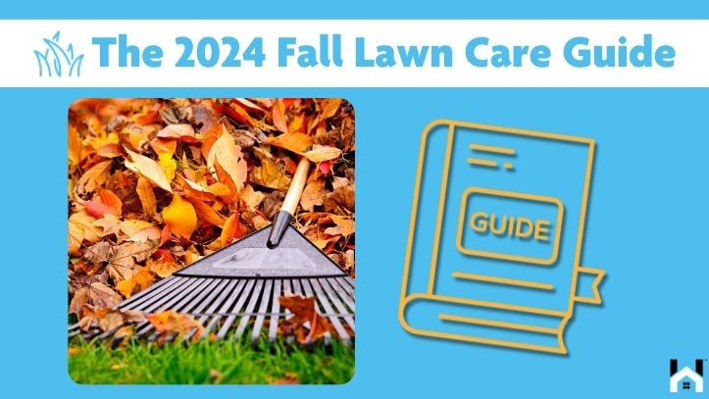A lush green lawn is a source of pride, but in many regions, responsible water use is essential. The good news is, you can have a beautiful lawn without excessive water waste. Here's how to water wisely:
1. Water Deeply and Infrequently
The goal is to encourage deep root growth for a stronger, more drought-tolerant lawn. Deep, less frequent watering is far better than a light sprinkle every day. Most lawns need about 1 inch of water per week. To gauge this, place a shallow can or dish in your yard while watering - once it's reached an inch, you're good!
2. Water in the Early Morning
The best time to water is before the sun gets high and temperatures climb. This minimizes evaporation, giving your lawn more time to absorb the water. Watering in the evening leaves grass wet for longer, which can encourage fungal diseases.
3. Know Your Soil
Soil type plays a big role! Sandy soil drains quickly and may need more frequent watering. Clay soil holds moisture longer, so you can water less often. Observe how your lawn reacts to watering to fine-tune your schedule. Here are a few methods to identify your soil:
1. The Feel Test
- Take a handful of slightly damp soil. (Not soaking wet, but moist enough to form a ball).
- Squeeze it firmly. Then open your hand and observe:
- Sandy Soil: Crumbles easily, feels gritty, and won't retain its shape.
- Silty Soil: Feels smooth and slightly slippery, holds its shape loosely, but crumbles when lightly poked.
- Clay Soil: Forms a tight ball that doesn't readily break apart, feels sticky.
- Loamy Soil: The ideal! Holds shape, but crumbles easily with a light touch. Feels slightly gritty but also smooth.
2. The Jar Test
- Fill a clear jar about halfway with soil.
- Add water almost to the top, leaving an inch of space.
- Put a lid on the jar and shake vigorously.
- Let the jar sit undisturbed for at least a day. The soil will settle into distinct layers.
- Bottom layer: Sand (heaviest particles)
- Middle layer: Silt
- Top layer: Clay (lightest particles)
- Measure the thickness of each layer to estimate the percentages of sand, silt, and clay in your soil.
3. The Ribbon Test
- Take a handful of damp soil.
- Roll the soil into a ball and try to form a ribbon by pressing it between your thumb and forefinger.
- Sandy Soil: Won't form a ribbon
- Silty Soil: Forms a short, crumbly ribbon.
- Clay Soil: Forms a long, flexible ribbon. The longer the ribbon you can make, the higher the clay content.
Additional Tips:
- Check for Chalk: Add a splash of vinegar to a soil sample. If it bubbles or fizzes, the soil is alkaline and contains calcium carbonate, indicating chalky soil.
- Observe Your Landscape: Plants themselves can hint at the soil type. Plants favoring moist, rich soil likely mean you have higher clay content. Lots of weeds (especially with deep taproots) can indicate compacted, less rich soil.
- Consult Resources: The USDA Web Soil Survey (https://websoilsurvey.sc.egov.usda.gov/App/HomePage.htm) can provide valuable information on soil types in your area. Your local university cooperative extension service is another great resource.
Why Does it Matter?
Knowing your soil type helps tailor both watering and fertilization routines. Sandy soils need more frequent watering, while clay soils benefit from less frequent, deeper watering. Fertilizer needs also differ based on soil, as some soils are naturally more nutrient-rich than others.
4. Observe Your Lawn
Your lawn will tell you when it's thirsty! Watch for these signs:
- Footprints: If footprints remain visible long after you walk on the grass, it's getting dry.
- Color Changes: Grass turns a dull bluish-gray when it needs water.
- Leaf Blades: Blades of grass will fold or curl lengthwise when stressed from lack of moisture.
5. Invest in Smart Irrigation
Smart irrigation systems take the guesswork out of watering. They use soil moisture sensors or weather data to automatically adjust watering schedules, conserving water and ensuring your lawn gets what it needs.
6. Use the Right Sprinklers
Low-trajectory sprinklers and drip irrigation systems are more water-efficient than sprinklers that shoot water high into the air, where much is lost to evaporation or wind drift.
7. Avoid Watering When Windy
Watering your neighbor's lawn along with your own isn't good water stewardship. Strong winds will blow a significant portion of the water away, wasting your efforts and your water.
8. Embrace Xeriscaping
If you live in a drought-prone area, consider embracing xeriscaping principles. This means choosing drought-tolerant plants, clever hardscaping, and efficient watering techniques to create a beautiful landscape that conserves water.
Bonus Tip: Raise Your Mowing Height
Taller grass shades the soil, helping to reduce evaporation and keeping roots cooler. Follow the "1/3 rule" - never mow off more than one-third of the grass blade at a time.
A Healthy Lawn and a Healthy Planet
By implementing these watering tips, you'll have a beautiful lawn while also doing your part to conserve precious water resources. Remember, smart watering doesn't mean sacrificing lawn health; it means a greener lawn and a greener approach!




